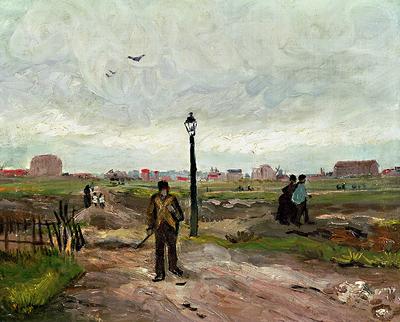Concerns about the Expulsion of the Poor from Paris
Even before the full impact of Haussmann's redrawing of the Paris map had been experienced, many of his critics were concerned that the changes would lead to the segregation of Parisian by income and to the exiling of the poor from the center of the city to slums in the suburbs.
As a result of the transformation of the old Paris, the opening of new streets, the widening of narrow ones, the high price of land, the extension of commerce and industry, with the old slums giving way each day to apartment houses, vast stores, and workshops, the poor and working population finds itself, and will find itself more and more, forced out to the extremities of Paris; which means that the centre is destined to be inhabited in the future only by the well-to-do.
|
Vincent van Gogh, The Outskirts of Paris 1886 |
Vincent Van Gogh, Outskirts of Paris Near Montmartre (1887) | Artisans and workers are shut up in
veritable Siberias, cross-crossed with winding, unpaved paths, without
lights, without shops, with no water laid on, where everything is
lacking. . . . We have sewn rags onto the purple role of a queen; we have built with Paris two cities, quite different and hostile: the city of luxury, surrounded, besieged by the city of misery. . . . You have put temptation and covetousness side by side.
|

